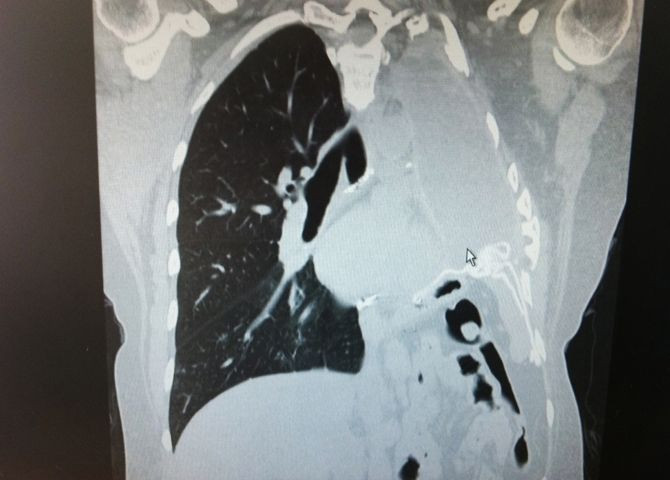Pros and Cons For CT Screening for Lung Cancer

There are positive and negative results that recently resulted in a National Lung Screening Trial about CT screening for lung cancer, according to a May 20, 2012 JAMA article.
The National Lung Screening Trial, which began in 2002 was the most informative, demonstrating that among 53 454 participants enrolled, screening resulted in significantly fewer lung cancer deaths. The other two smaller studies showed no such benefit.
Lung cancer is one of the leading causes of death in America. The death rate may be reduced with proper screening, such as low-dose computed tomography (LDCT). Advanced disease can result in only a five-year survival rate.
The study produced undetermined results about possible harms of screening and generalizability of results. According to the article in JAMA, in 2012 lung cancer deaths will account for more than 160,000 deaths.
Additional potential screening methods are: chest radiographs, sputum cytology or biomarkers and exhaled breath.
The American Cancer Society says in one of their reports that there is some harm associated with screening.
“Approximately, 40% of individuals in the CT arm experienced at least one abnormal CT scan during the study,” says the Lung cancer Guidance Workgroup. “Most of those abnormalities required only additional imaging to determine if the nodule was growing, but some required more invasive diagnostic procedures such as bronchoscopy or lung biopsy.”
The eligibility requirements for the National Lung Screening Trial being between 55-74 years old with no signs of symptoms of lung cancer; health exclusions include: Metallic implants or devices in the chest or back, requirement for home oxygen supplementation and prior history of lung cancer or other lung cancer symptoms.
The study also points out that the high risk of false positive test results with lung screening exist. Another harm within the study is the radiation associated with CT scans.
However, Low-dose helical CT, also called spiral CT, uses X-rays to scan the entire chest in about 5 to 10 seconds during a single breath-hold and produces a small amount of radiation.
Nearly all hospitals and free-standing radiology facilities in the United States have a helical CT machine. These are routinely used after cancer is diagnosed to determine how advanced it is.
The NLST results were published in the New England Journal of Medicine in August 2011, and showed Low-dose CT scanning reduced death from lung cancer by a relative 20% compared to screening with chest X-rays (247 vs. 309 deaths per 100,000 person-years).
One lung cancer death was prevented for every 320 people screened with low-dose CT scan.



























